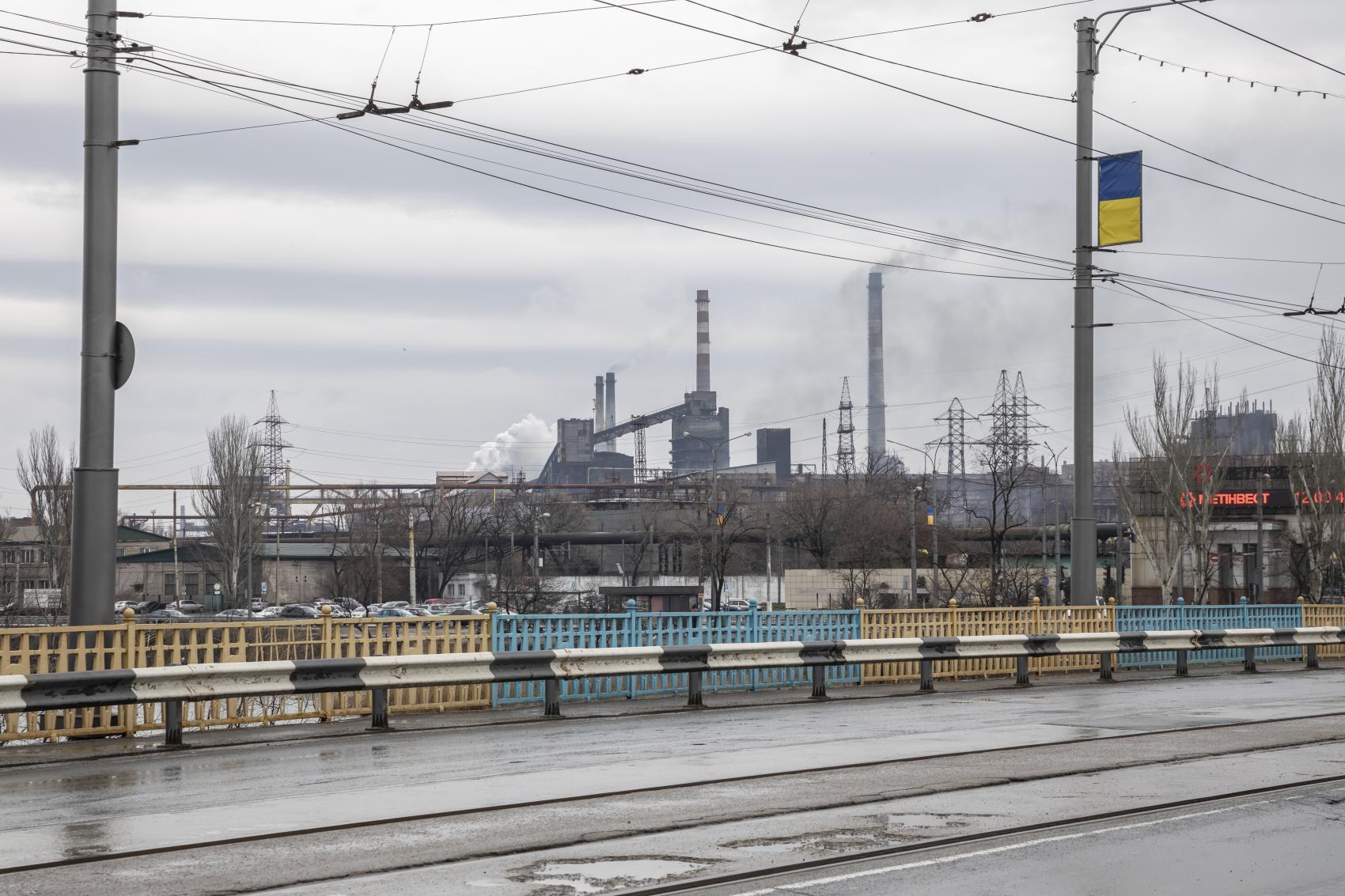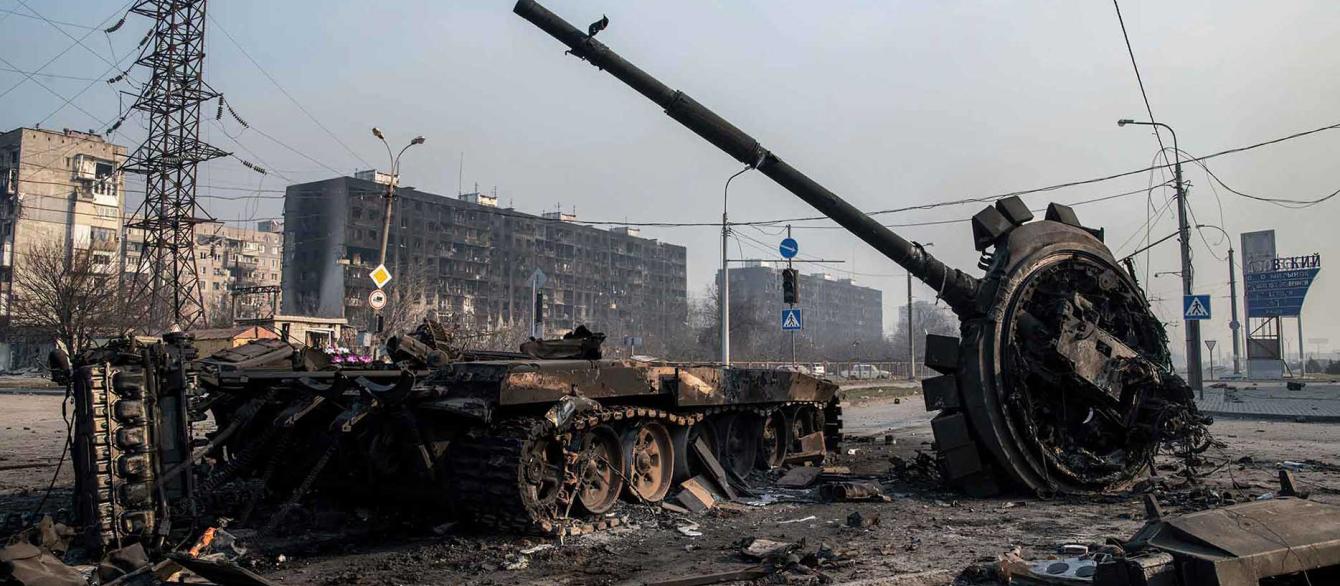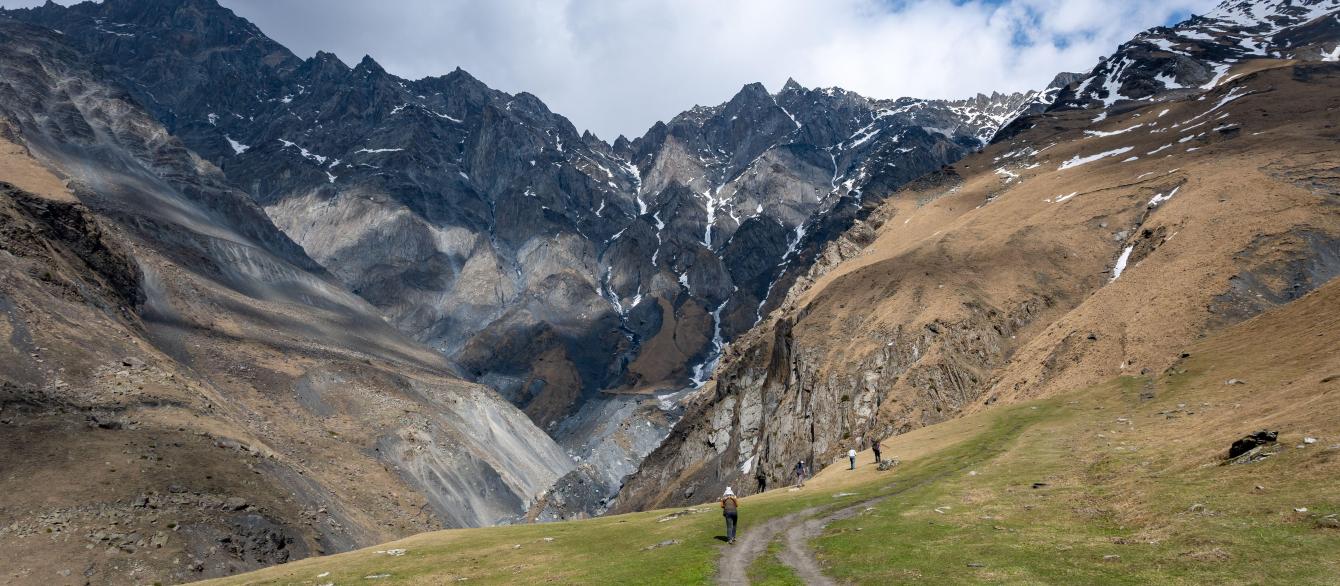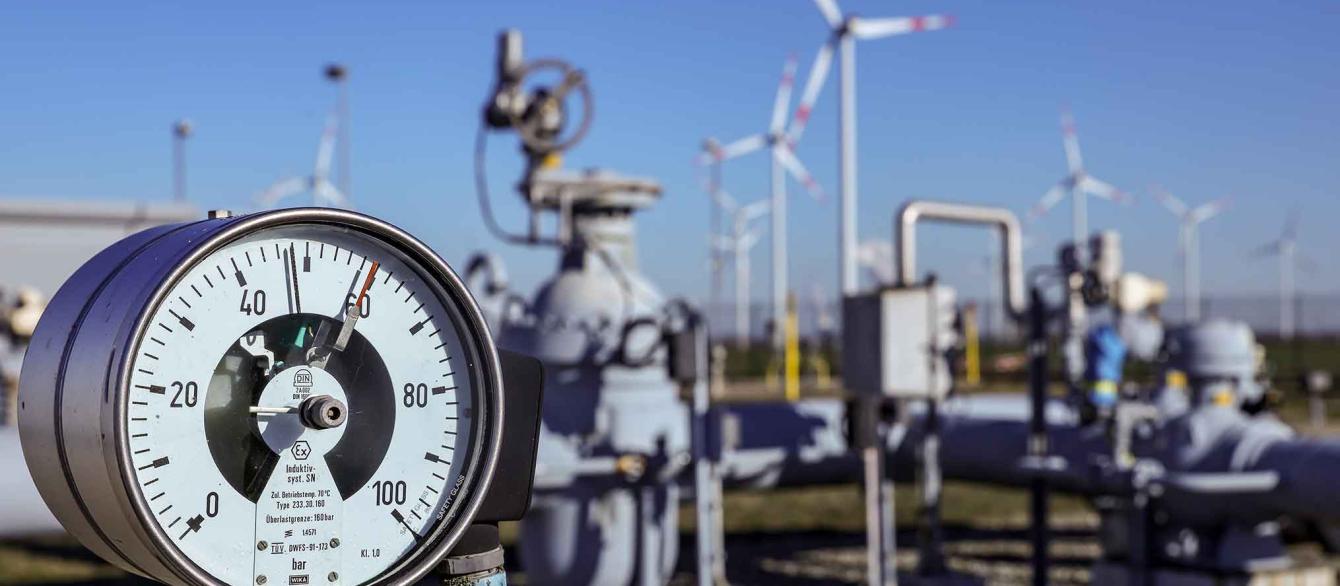Good political scientist that I wanted to be, when I started writing Russian Energy Chains I was moved first and foremost by an academic question: How does the different materiality of various energy goods (natural gas, oil, coal, etc.)—even their molecular structure—affect actors’ ability to use each type of energy not only as an externally directed weapon, but as a building block of domestic power?
I was drawn to this question in part by the intellectual challenge, but also by my frustration at conventional U.S.-based political science research that, mirroring our country’s obsession with cars, seemed to look at energy and power largely through the prism of oil. I was frustrated with the way all energy politics in the former Soviet Union were being analyzed through this prism, as well as through what seemed to be a very crude understanding of Russia’s “energy weapon.” From some of my previous work on energy relations between Russia and former Soviet states, I had an inkling that types of energy other than oil would work differently in terms of their external power projection, but I wanted to understand how those differences would also affect domestic power relations.Margarita M. Balmaceda, Energy Dependency, Politics, and Corruption in the Former Soviet Union: Russia’s Power, Oligarch’s Profits and Ukraine’s Missing Energy Policy, 1995–2006 (London: Routledge, 2008); Margarita M. Balmaceda, The Politics of Energy Dependency: Ukraine, Belarus, and Lithuania Between Domestic Oligarchs and Russian Pressure (Toronto: University of Toronto Press, 2013); and Margarita M. Balmaceda, Living the High Life in Minsk: Russian Energy Rents, Domestic Populism and Belarus’ Impending Crisis (Budapest: Central European University Press, 2014).

After seven years and thousands of hours poring over energy technology textbooks, historical records, companies’ annual reports, railroad cargo data, and myriad other materials in Russian, Ukrainian, German, and English, I think I found promising answers to that original question. The book that had started on a dark night in Oslo could stand its ground. Reconstructing three exemplary value chains of Russian natural gas, oil, and coal all the way from Siberia to final use in Germany, and following three molecules in their travelogue along these chains, I was able to show how the technical requirements associated with the material characteristics of each energy type both constrained and enabled their use as a basis for power.
The Importance of Pressure
From countless textbooks on natural gas production and transportation, I learned that the very ‘gaseous’ nature of natural gas makes the issue of pressure—pressure when gas comes out of the field, pressure when it needs to be transported over long distances, pressure when it needs to be delivered for residential use—essential. This technical requirement basically makes the entire transcontinental natural gas enterprise an enterprise in managing pressure, which also affects how this gas may be used for political pressure.
For instance, pressure issues have led natural gas transportation to happen largely via pipelines, which contributed to the presence of primarily regional, rather than global, gas markets, and to the lack of a quotable global price for natural gas, in turn contributing to a lack of transparency and to corruption. Yet, on the other hand, these material characteristics make it harder for a state to simply “turn off the spigot”: precisely because of pressure issues, it is hard to stop production quickly at will. Rather, it is more a situation of “ship or flare,” with all its ecological implications.
Yet life has strange ways of catching up with you. Just as I was getting comfortable enjoying my small victory and planning big new projects, there came the war, and with it a forced rereading of the questions and also the answers provided by this book. When I was writing, the last thing I would have expected was an all-out Russian war against Ukraine. Little could I imagine that only a few months after its publication, a new display of Russian aggression against Ukraine, NATO, and the West would reassemble the pieces in this book to help us answer some very different questions: Why aggression? Why now? How did the actions, inaction, or silence of some of the actors involved contribute to this situation—and perhaps to its solution?
Parts of the book that once seemed like supporting characters now acquire central protagonism as we seek to understand how we got here, and how can we end this war. Lo and behold, it turns out that some little pieces I used to build an answer to that academic puzzle are key for understanding the current crisis. They range from Ukraine’s weakness, to the success of Russian/Gazprom PR about Ukraine’s unreliability, to the EU states’(especially Germany’s) deep enmeshment in these very tempting Russian energy chains—having led them to largely ignore Ukraine’s interests between 2014 and 2021, and that now make it challenging for them to support full-scale sanctions with any real bite.
Energy Chains
This crisis is not only or mainly about energy in the sense that Russia would want to occupy Ukraine to take control of that country as a natural gas and oil transit route (although the Ukrainian route is the shortest one linking Russia to West European markets), or in the sense that it would want to take control of Ukrainian natural gas and oil deposits (although Russia already has, in particular in Black Sea areas adjacent to Crimea).

Activists from Greenpeace block the main entrance to the oil refinery of PCK-Raffinerie GmbH on March 15, 2022.
It is about energy, though, in the way energy and power synergized all along the value chains, from Siberia to Germany, in such a way as to empower certain actors, predisposing them to certain actions—or inaction—that would lead Putin to conclude he could mount a full-fledged invasion of Ukraine with little resistance from European Union states. The European side of the energy chains reappears as central—the story of how threat and temptation interfaced there in the nearly eight years between Russia’s 2014 annexation of Crimea and the full-fledged invasion that began on February 24.
We see this clearly through the way in which participation in Russian energy chains predisposed West European players to types of business with Gazprom that benefited from Ukraine’s exclusion from the energy transit game. And this excluding of Ukraine from Russian energy export chains increased the country’s vulnerability to other types of Russian intervention.
All of this—the way various actors took on particular actions and inactions—takes place within the tension between Russian energy as threat and energy as temptation. Otherwise, why would these actors want to be part of them? Why would it be so hard to extract oneself from them? Let us only recall that only after the start of Russia’s large-scale attack on Ukraine did the German government finally decide to delay indefinitely the certification of the NordStream 2 pipeline.
With its steel giants badly damaged, with its economy destroyed, what new Ukraine will emerge?
As the United States and the European Union seek to devise effective sanctions that may, if not stop Putin’s war, at least slow the flow of financial resources used to continue it in the medium term, I have been able to appreciate anew the book’s take on energy markets not simply as a matter of supply, but as complex supply and, in particular, value chains. The emphasis on value chains (as opposed to simple material supply chains) highlights the key impact of price swings in different oil types and subproducts.
The key point here is that, in contrast with simple material supply chains and our common-sense expectation that the more processed and closer to the end consumer a product gets, the higher its market value, the oil industry is characterized by price volatility and swings in demand, which can lead to rapid increases and decreases in the value of specific products. Looking at the value chain side of the issue highlights how, in some situations, the value of refined oil products such as heavy heating oil, gasoline, or diesel is lower than that of the crude oil they are made from—as we have seen repeatedly in the case of Russian fuel exports.Margarita M. Balmaceda, Russian Energy Chains: The Remaking of Technopolitics from Siberia to Ukraine to the European Union (Columbia U. Press, 2021), 129-130.
This helps explain the fragmented way in which the oil market has reacted to both Western sanctions and some companies’ desire to flee the Russian market: on the one hand, with quickly growing prices for the most widely used global benchmark oil, Brent; on the other, with a steep fall in the price of Russia’s export brand, Urals/REBCO. Precisely this crash in the price of Urals as compared to Brent may tempt actors—from states like India to low-public profile traders—to flock to these supplies.
The way these issues have affected supplies of diesel (as compared to gasoline) to Western Europe shows the importance of understanding the diversity of products derived from a single crude oil molecule. It also brings to the fore the internal EU story of how mishandled valuations of diesel’s ecological impact affected EU states’ taxes and led to diesel becoming the automotive fuel of choice in most EU states. All of this is part of the key backstory to chapter 5’s hero, the crude oil molecule travelling from the Khanty-Mansiysk Autonomous Okrug in western Siberia and ending up as diesel supplies in a petrol station in Dresden, Germany.
What Comes Next?
But rereading Russian Energy Chains under the thunder of this new war also brings forth questions about the future—uncomfortable questions but also hopeful ones.

The Metallurgical Combine Azovstal Iron and Steel Works in Mariupol, Ukraine, as Russia invaded Ukraine on February 24, 2022.
The city of Mariupol has been in the headlines almost every single day in recent weeks. Tales of human despair, of a relentless siege leaving thousands of people seeking cover in dark basements without food, heat, water, or sanitation, of so-called humanitarian corridors that are perversely shot at while residents attempt to flee, of people being forcibly deported to Russia. It is almost impossible to recognize in this the Mariupol that is one of the heroes of chapter 6—the home of two of Ukraine’s most famous steelmaking factories, Azovstal and the MMK Steelworks founded under the tsarist empire in 1897.
These companies helped make Ukraine into a top-five global steel exporter. The port of Mariupol, adjacent to Azovstal, moved a significant percentage of Ukraine’s steel and became a key gateway for Ukrainian exports to the world. For most of the last two decades, Ukraine was exporting more steel per capita than Russia, China, India, or Brazil. This port is now being used for the indiscriminate shelling of the city by Russian warships. The city is in ruins. Steel giant Azovstal has been bombed and stopped operations for the first time since 1941, when the city was occupied by Nazi troops.

A destroyed tank likely belonging to Russia/pro-Russian forces lies amidst rubble in the north of the ruined city of Mariupol.
With its steel giants badly damaged, with its economy destroyed, what new Ukraine will emerge? Countless times while writing and rewriting this chapter, I returned to the key fact that Ukraine was the only country in the world still using the most backward of the three leading steel technologies—the 19th-century open-hearth furnace, in every other country of the world relegated to science and technology museums.
Looking at the ruins of Azovstal, I wonder if a large-scale, Marshall Plan–size initiative after the end of this war will be able to propel Ukraine into still-in-the making 21st-century decarbonized steelmaking. After all, when in July of 2021 the United States and Germany proposed and (modestly) seed-funded a Green Fund for Ukraine as “consolation prize” for giving the OK for the completion of the NordStream 2 pipeline that would further marginalize Ukraine from energy export chains, a key point had been to support Ukraine’s decisive move away from a coal economy.
Perhaps this new Ukraine will be one where its highly energy-intense metallurgical industry will be replaced by newer low-carbon technologies. Perhaps the new Ukraine that will emerge will be stronger than the one left behind on February 23. I have no doubt this will be the case. But first, Ukraine needs to survive.






